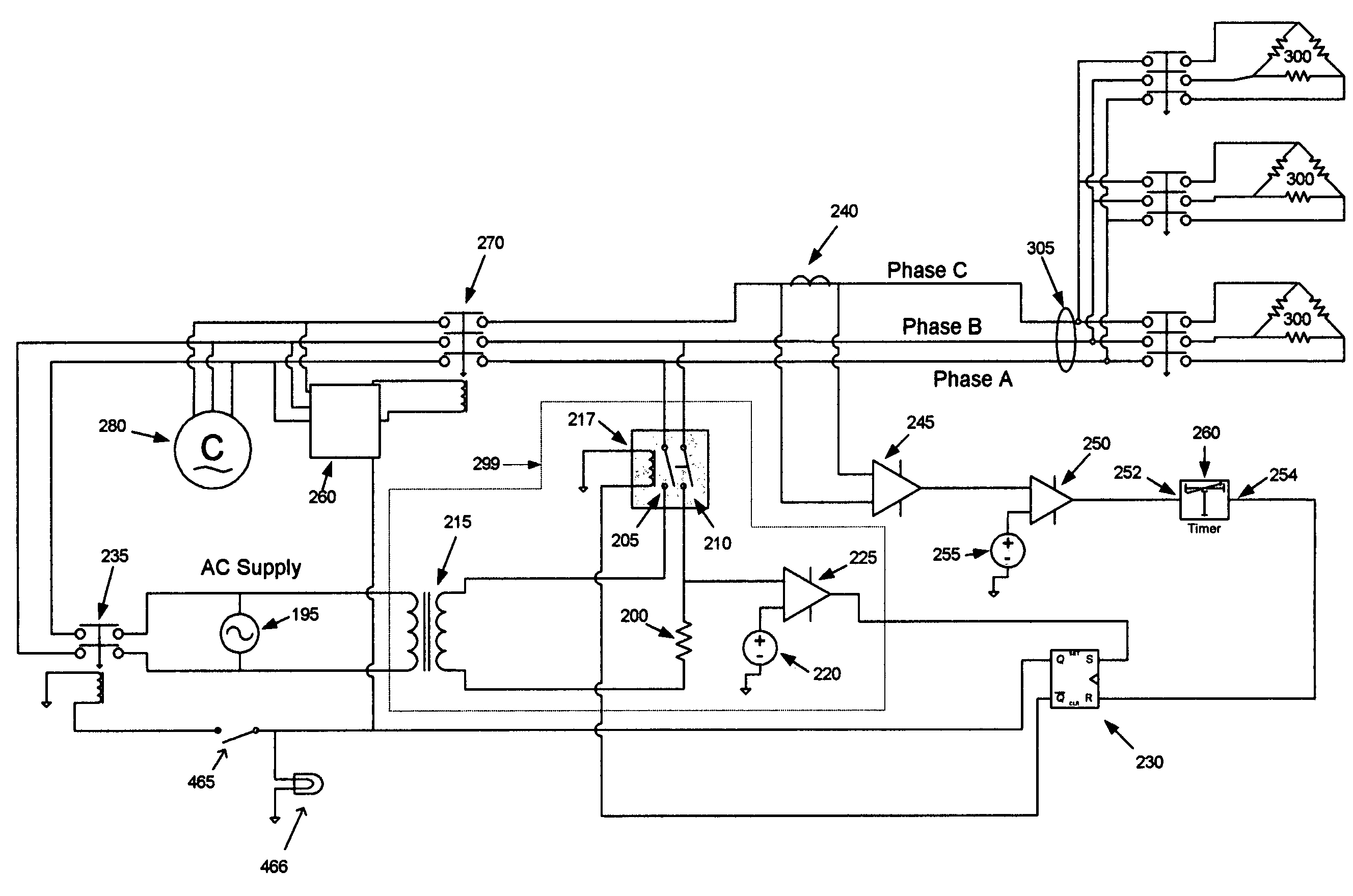Automatic phase converter
a phase converter and automatic technology, applied in the field of automatic phase converters, can solve the problems of often left running three-phase rotary converters, unable to provide three-phase power from utilities, and unable to meet the needs of rotary converters, so as to reduce acoustic noise and save electrical energy
- Summary
- Abstract
- Description
- Claims
- Application Information
AI Technical Summary
Benefits of technology
Problems solved by technology
Method used
Image
Examples
Embodiment Construction
[0024]A three phase rotary converter has many similarities with a three phase induction motor. Both structures have electrical windings spaced around their periphery and a rotor structure which is free to spin. The rotor has an electrical structure which is magnetically coupled to the stationary windings located around the periphery. The stationary windings are referred to as the stator. Generally, three separate windings forming the stator are placed at about 120 degree increments around the periphery of the motor structure. In the case of a three phase induction motor, these windings are energized by AC voltages which are electrical 120 degrees out of phase with respect to each other. In the case of a three phase rotary converter, one of the windings is energized with a single phase voltage. If the rotor is spun at a speed near the synchronous speed of the structure and an appropriate AC voltage is applied to the drive winding, the rotor will continue to spin. This action is very ...
PUM
 Login to View More
Login to View More Abstract
Description
Claims
Application Information
 Login to View More
Login to View More - R&D
- Intellectual Property
- Life Sciences
- Materials
- Tech Scout
- Unparalleled Data Quality
- Higher Quality Content
- 60% Fewer Hallucinations
Browse by: Latest US Patents, China's latest patents, Technical Efficacy Thesaurus, Application Domain, Technology Topic, Popular Technical Reports.
© 2025 PatSnap. All rights reserved.Legal|Privacy policy|Modern Slavery Act Transparency Statement|Sitemap|About US| Contact US: help@patsnap.com



